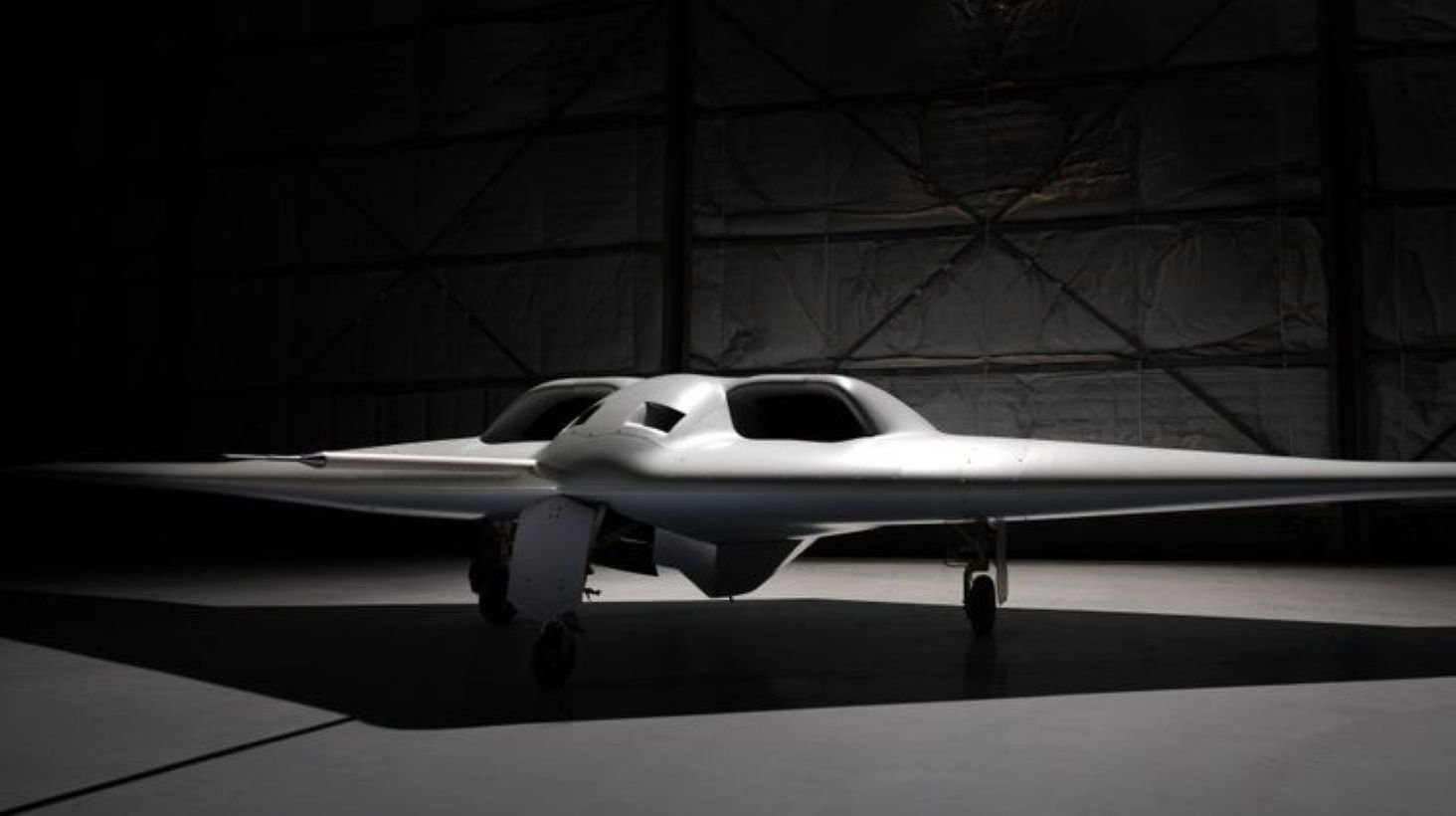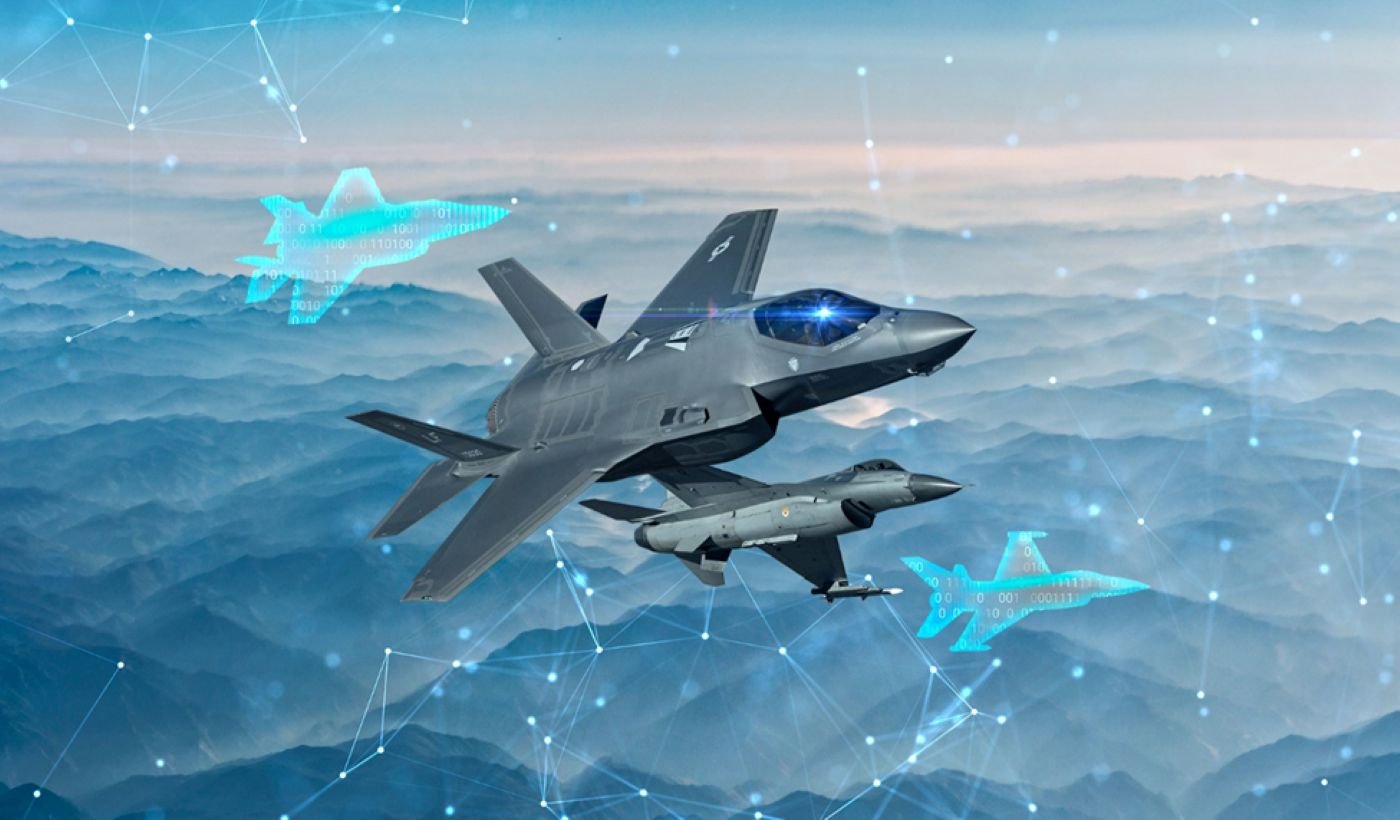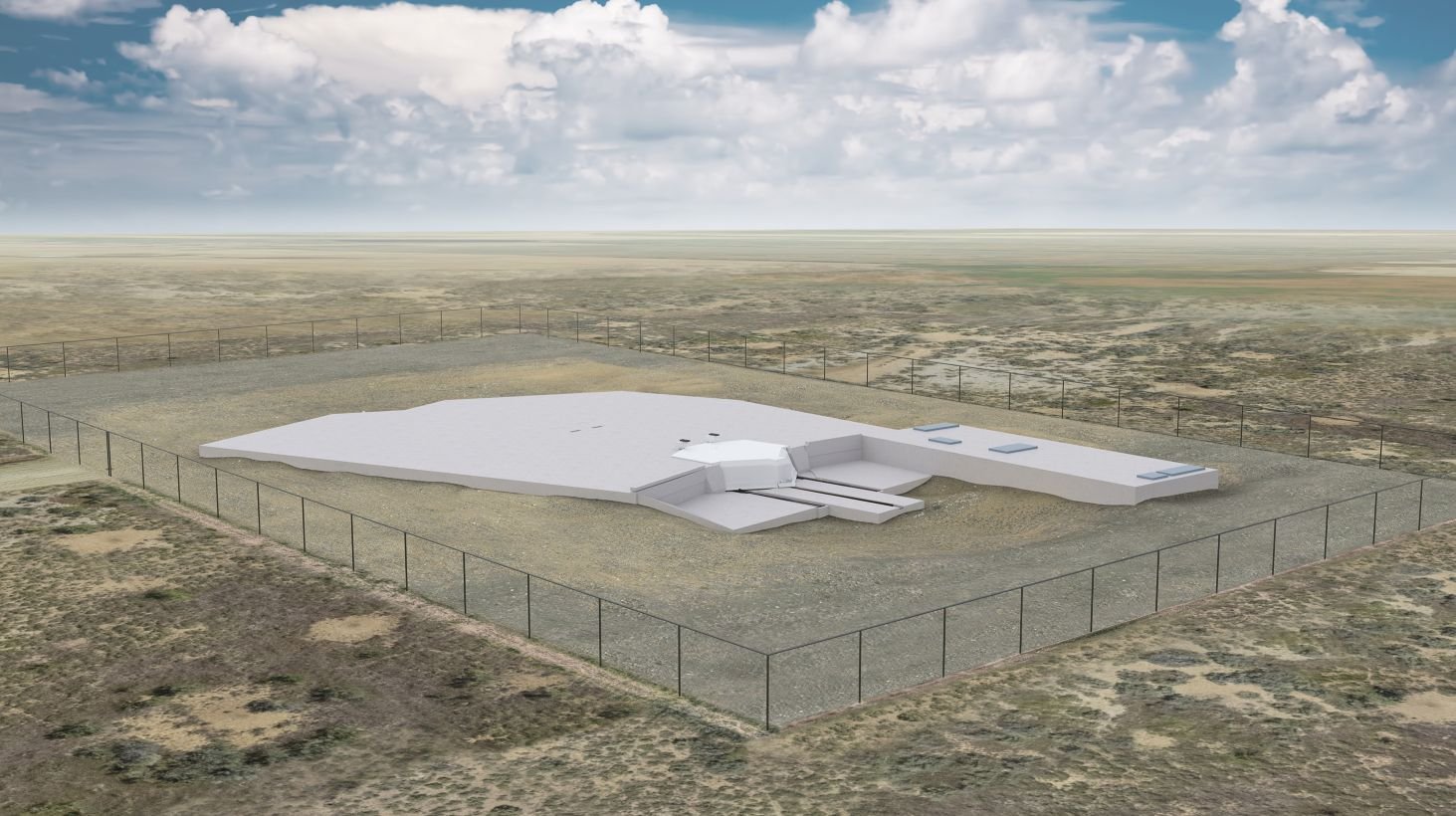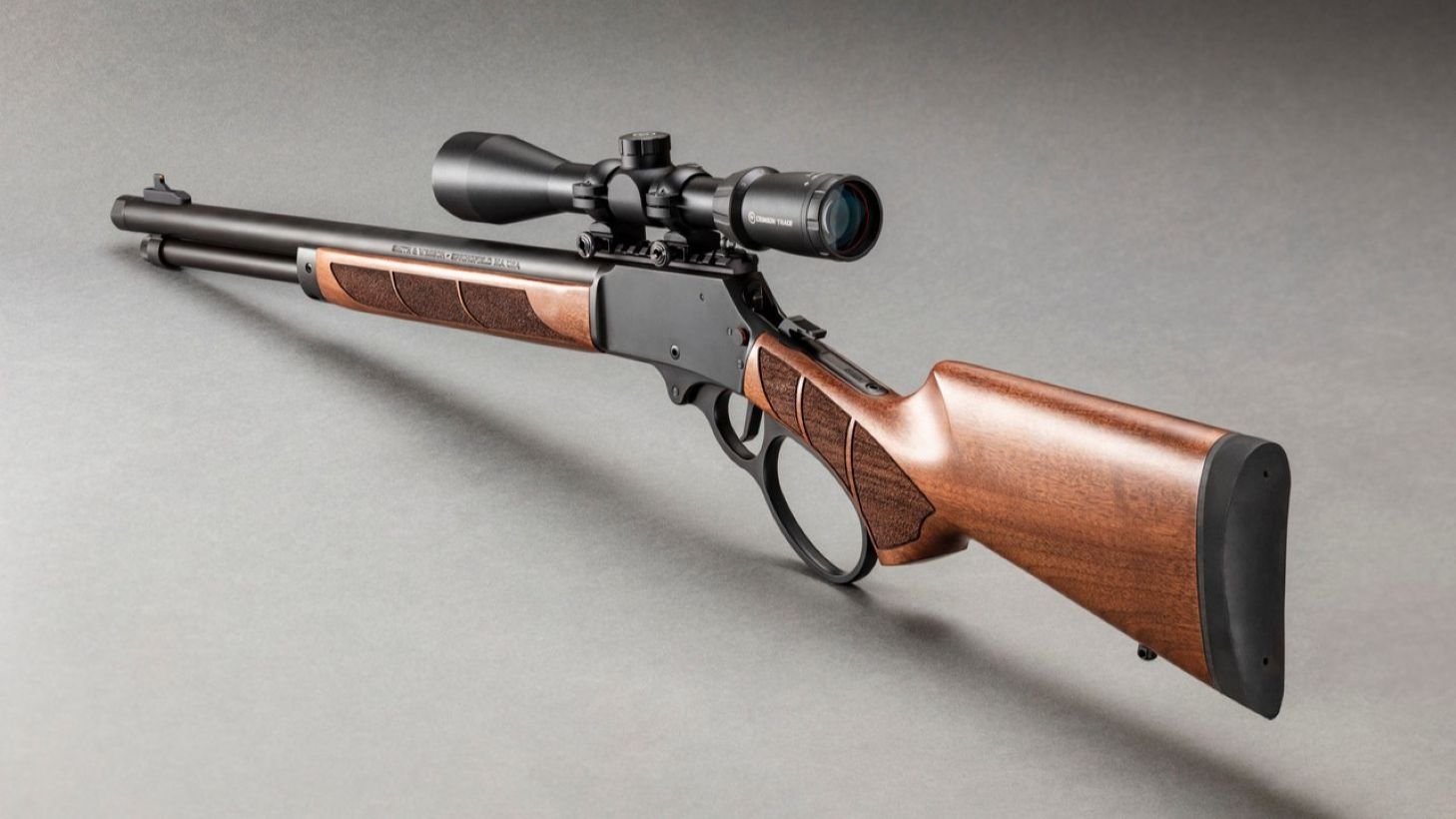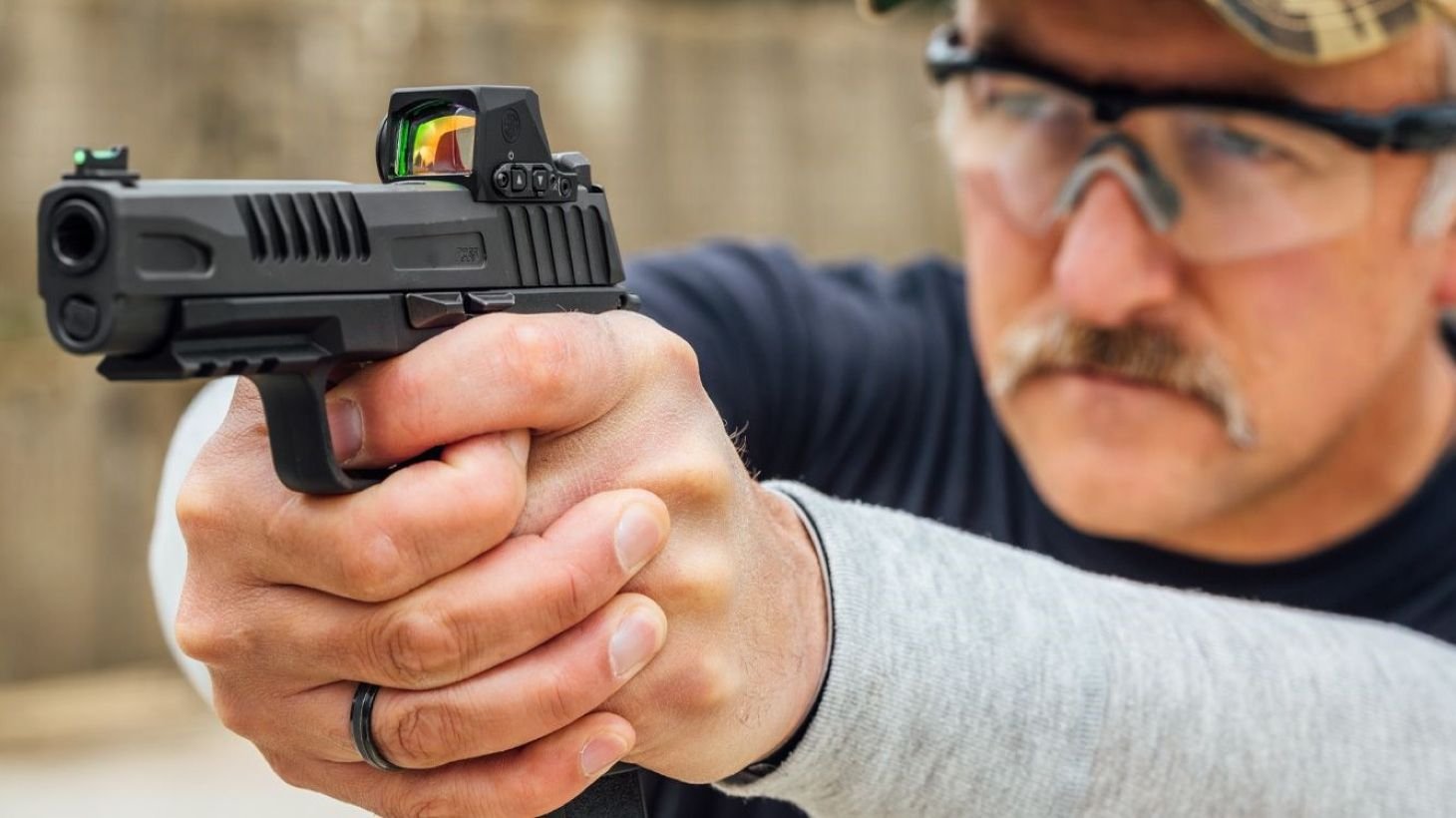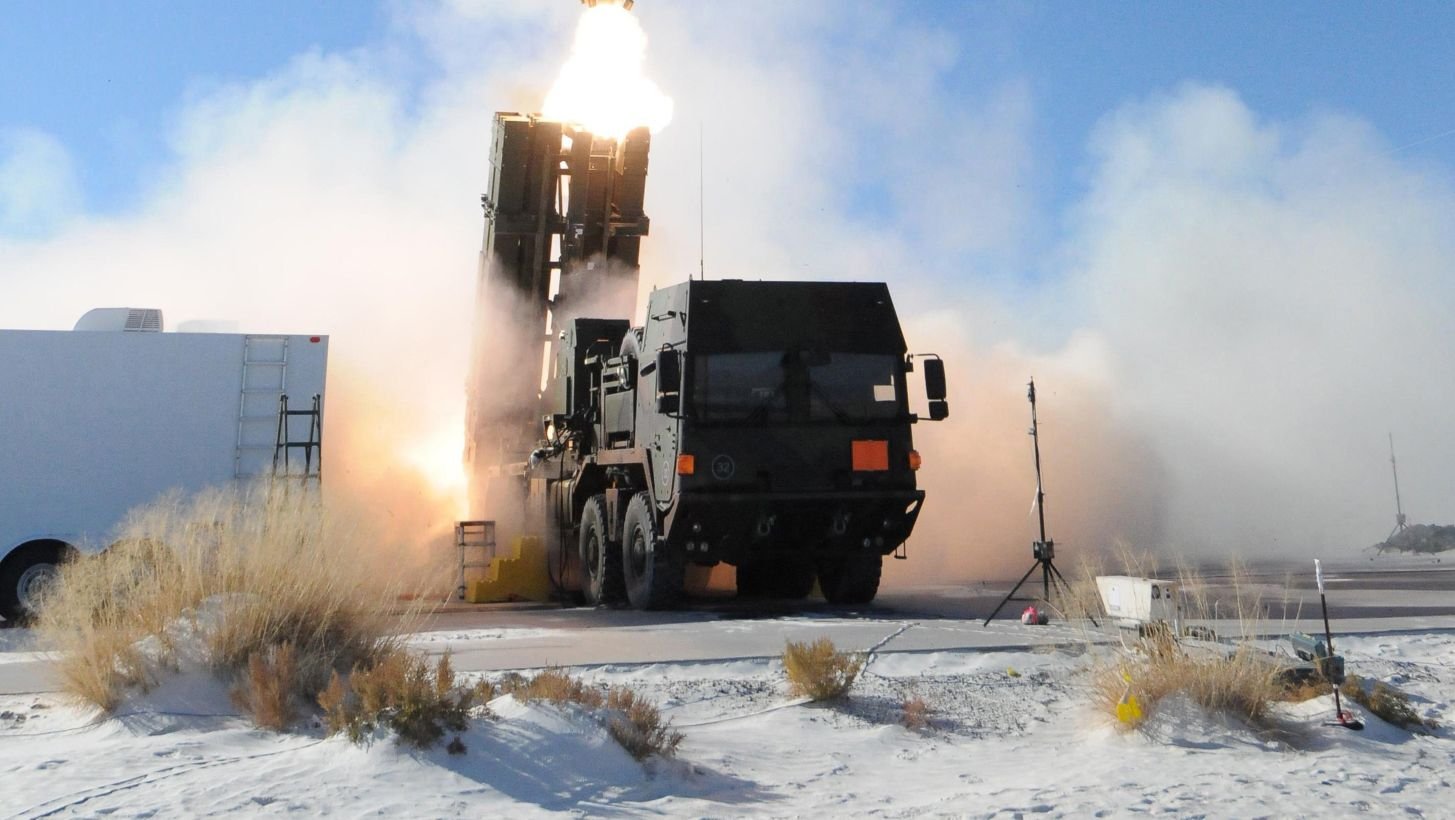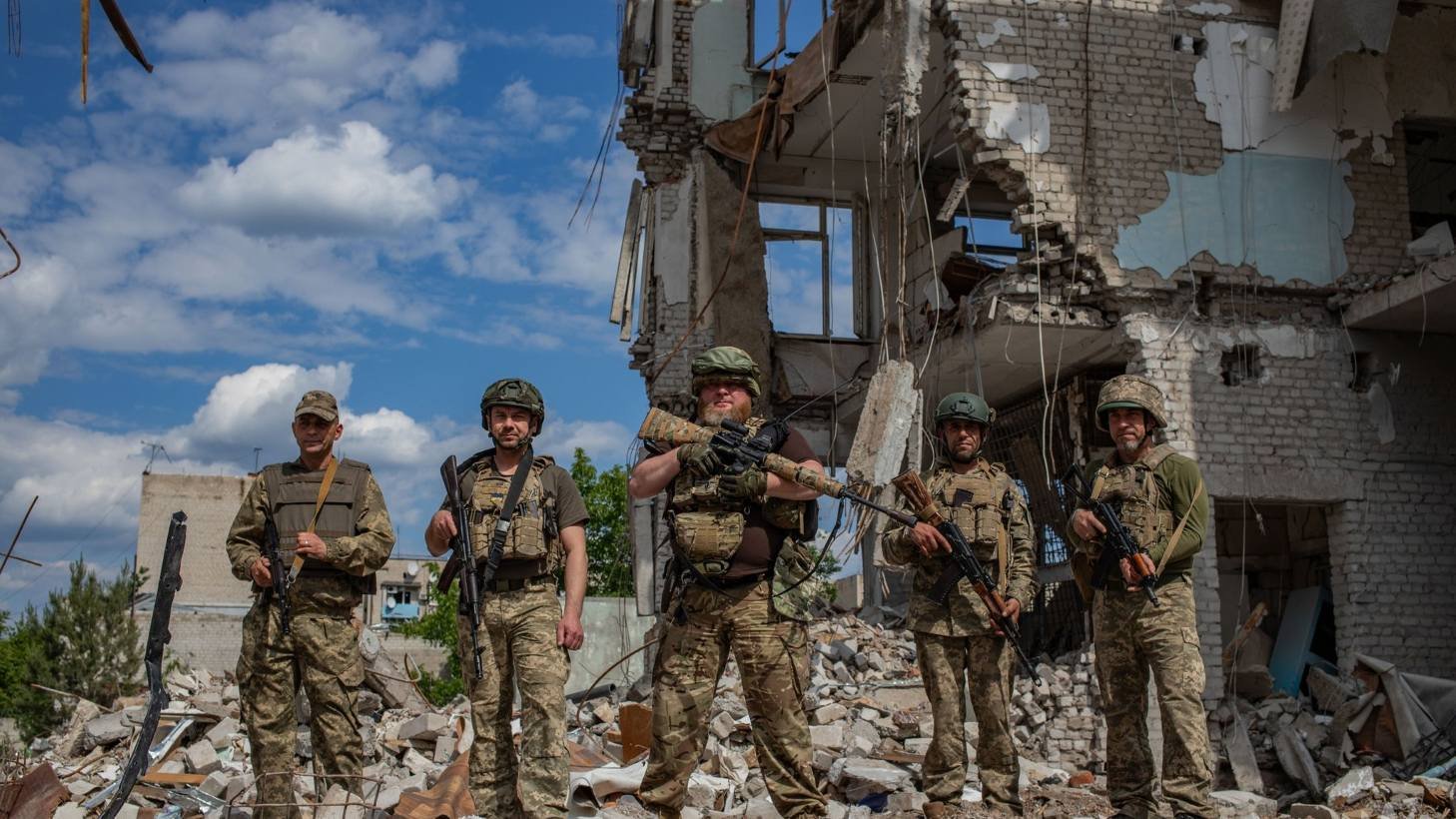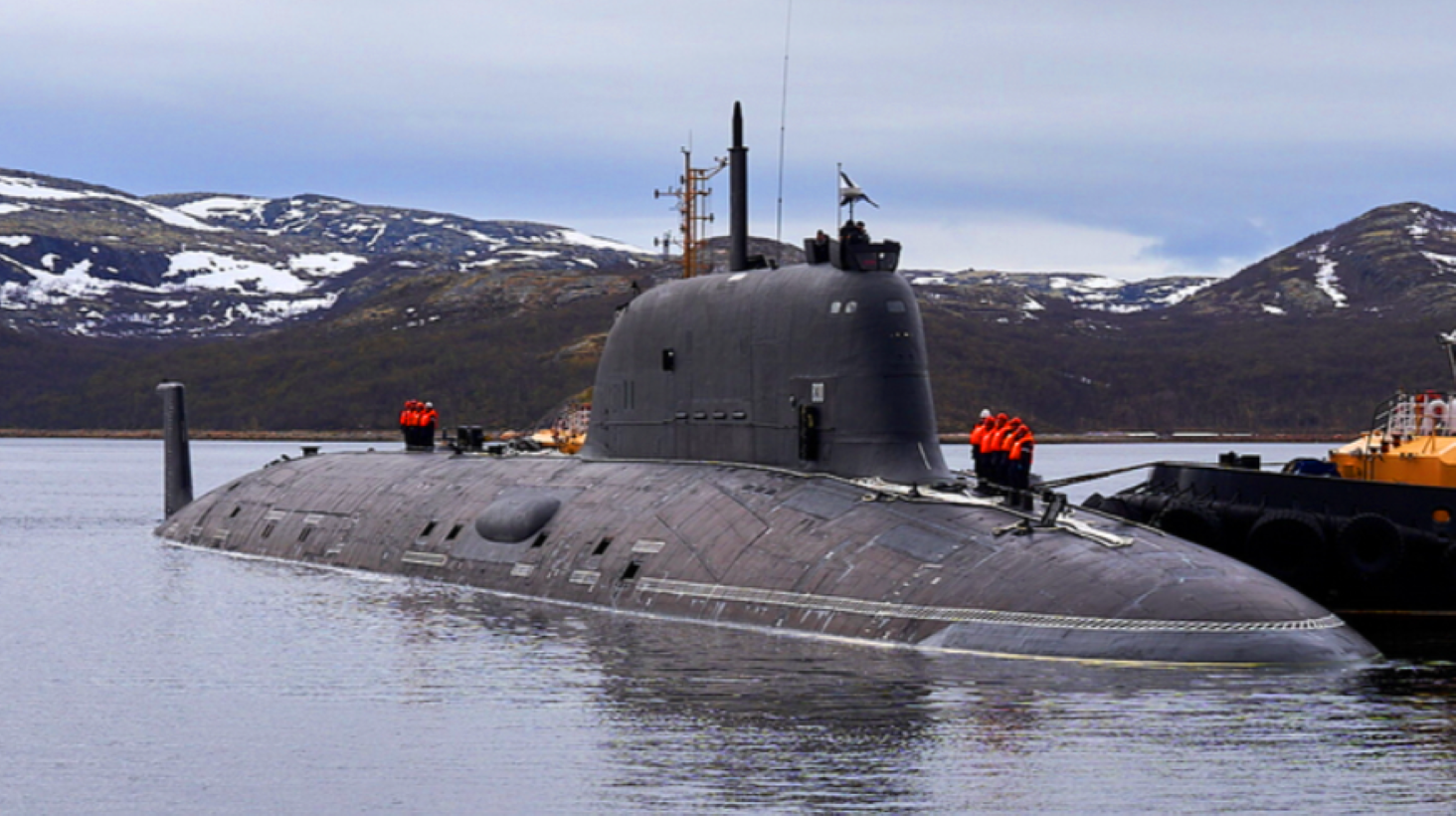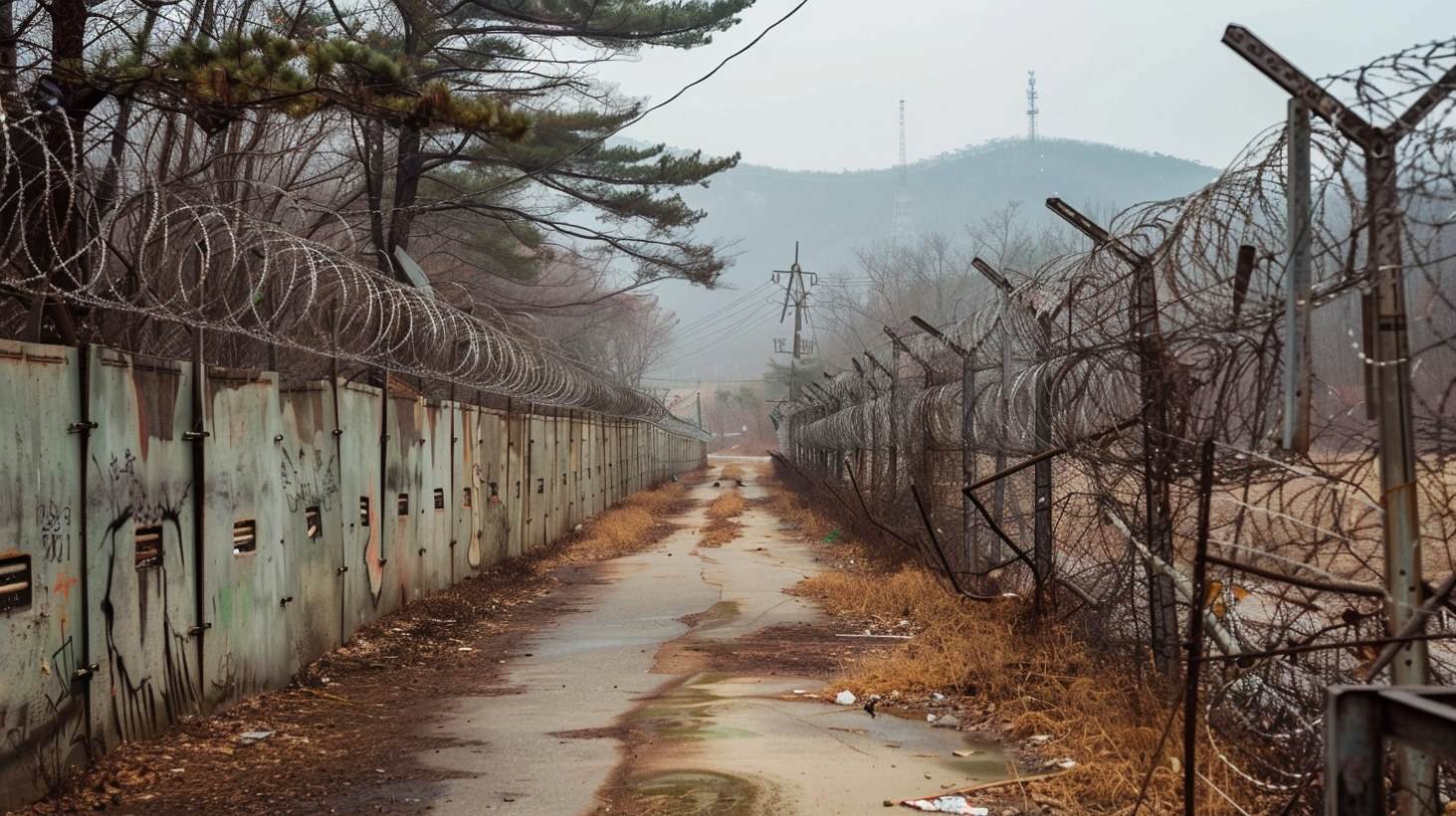-
Posts
790 -
Joined
-
Last visited
Content Type
Profiles
Uncrowned Armory News
Prepping Cookbook
Conspiracy Theories
Uncrowned Tactical Sports News
Prepping
Forums
Events
Everything posted by Uncrowned Guard
-
A New Player in the M&P Line: S&W Carry Comp Series Smith & Wesson has recently moved to innovate its M&P line of pistols with the introduction of the Carry Comp series. This new series bridges the gap between the rising popularity of compensators and the accessibility of having them directly integrated into the pistol. The process involves offsetting the muzzle riser during recoil, achieved by directing exhaust gases upward through a compensator cut into the slide and barrel close to the muzzle. This significant feature had previously been reserved for the M&P 2023 Spec series as an add-on, but the new Carry Comp series by Smith & Wesson has it directly integrated. A Variant for Every Need: Carry Comp Options Across Sizes In terms of choice, the Carry Comp series from Smith & Wesson does not disappoint. Across three distinct frame sizes—full-size, compact, and micro-compact—you'll find options making themselves available. The full-size version is built on the foundation of the S&W’s M&P9 Metal frame. On the other end of the spectrum, we find the micro-compact version molded from the M&P Shield Plus line, with the compact version also crafted in polymer. Smith & Wesson's dedication to compensators is not a new development, with previous models like the Performance Center M&P 10mm pistol and the S&W 19 Carry Comp revolver boasting integral compensators. M&P9: The New Face of Compact Efficient Shooting The brand new M&P9 Carry Comp Series by Smith & Wesson has been crafted with key features aimed at an elevated shooting experience. The strategically located Power Port at the twelve o’clock position allows gas to be diverted upwards, making recoil management more convenient. The Carry Comp Series also boasts adaptability with optics-ready slides. The novel ClearSight Cut ensures an undiminished and clear view if red dot sighting is preferred. Furthermore, tritium front night sight and blacked-out serrated rear sight are included for those who prefer iron sights. The grey Armornite-finished slides and flat-face trigger designs place a unique edge on the fresh Carry Comp models, which all ship with a Performance Center Cleaning Kit. MSRP varies across the line, with the M&P9 M2.0 Metal Carry Comp priced at $999, the M&P9 M2.0 Compact Carry Comp at $799, and the M&P9 Shield Plus Carry Comp at $649.
-
- smith & wesson
- carry comp series
- (and 3 more)
-
Northrop Grumman Takes the Reins on Next-gen Hybrid Electric Drone Northrop Grumman Corporation has reached a significant breakthrough in the defense sector, having embarked on the construction of a next-generation hybrid electric Uncrewed Aircraft System (UAS) - XRQ-73. This pioneering model deemed the Series Hybrid Electric Propulsion AiRcraft Demonstration vehicle (SHEPARD), stimulated excitement when it received its official X-plane status from the Defense Advanced Research Projects Agency (DARPA). The company has worked closely with its subsidiary, Scaled Composites, to drive the project. The Manifestation of SHEPARD SHEPARD creates a paradigm shift in aircraft engineering by ingeniously merging the AUD/IARPA Great Horned Owl (GHO) project's architecture and technologies. The model illustrates the power of DARPA’s X-prime initiative to convert emerging technology into manifold system-level integration, mitigating risks and fast-tracking new mission-aligned aircraft designs. SHEPARD also opens a gateway to comprehend potential defense benefits, as stated by the SHEPARD Program Manager, Steve Komadina. In collaboration with other major service providers like Cornerstone Research Group, Inc., Brayton Energy, LLC, PC Krause, and Associates, EaglePicher Technologies, LLC, Northrop Grumman Corporation’s Aeronautics Systems is the leading contractor for the SHEPARD project. The Redondo Beach, CA sector, along with participants from the Air Force Research Laboratory (AFRL) and the Office of Naval Research (ONR), join efforts in this ambitious undertaking. Looking into the Future of Stealth Aircraft The XRQ-73 aircraft, being a potential Group 3 UAS, weighs approximately 1,250 pounds, promising exceptional performance as a stealth reconnaissance drone. This initiative also fuels questions on how it may influence future combat strategies. Echoing the sentiment of many defense experts, both the absence of heat and lowered radar signatures from SHEPARD suggest an improved stealth capability. As the first flight of XRQ-73 is forecasted to take place by 2024, it certainly sets the benchmark for future hybrid electric stealth aircraft. While critics question the feasibility of electric aircraft, others applaud the venture for its environmental sustainability and potential revolutionary implications in the defense sector. View full article
-
- northrop grumman
- hybrid electric drone
- (and 3 more)
-
Northrop Grumman Takes the Reins on Next-gen Hybrid Electric Drone Northrop Grumman Corporation has reached a significant breakthrough in the defense sector, having embarked on the construction of a next-generation hybrid electric Uncrewed Aircraft System (UAS) - XRQ-73. This pioneering model deemed the Series Hybrid Electric Propulsion AiRcraft Demonstration vehicle (SHEPARD), stimulated excitement when it received its official X-plane status from the Defense Advanced Research Projects Agency (DARPA). The company has worked closely with its subsidiary, Scaled Composites, to drive the project. The Manifestation of SHEPARD SHEPARD creates a paradigm shift in aircraft engineering by ingeniously merging the AUD/IARPA Great Horned Owl (GHO) project's architecture and technologies. The model illustrates the power of DARPA’s X-prime initiative to convert emerging technology into manifold system-level integration, mitigating risks and fast-tracking new mission-aligned aircraft designs. SHEPARD also opens a gateway to comprehend potential defense benefits, as stated by the SHEPARD Program Manager, Steve Komadina. In collaboration with other major service providers like Cornerstone Research Group, Inc., Brayton Energy, LLC, PC Krause, and Associates, EaglePicher Technologies, LLC, Northrop Grumman Corporation’s Aeronautics Systems is the leading contractor for the SHEPARD project. The Redondo Beach, CA sector, along with participants from the Air Force Research Laboratory (AFRL) and the Office of Naval Research (ONR), join efforts in this ambitious undertaking. Looking into the Future of Stealth Aircraft The XRQ-73 aircraft, being a potential Group 3 UAS, weighs approximately 1,250 pounds, promising exceptional performance as a stealth reconnaissance drone. This initiative also fuels questions on how it may influence future combat strategies. Echoing the sentiment of many defense experts, both the absence of heat and lowered radar signatures from SHEPARD suggest an improved stealth capability. As the first flight of XRQ-73 is forecasted to take place by 2024, it certainly sets the benchmark for future hybrid electric stealth aircraft. While critics question the feasibility of electric aircraft, others applaud the venture for its environmental sustainability and potential revolutionary implications in the defense sector.
-
- northrop grumman
- hybrid electric drone
- (and 3 more)
-
Potential Shift in South Korean Nuclear Stance Na Kyung-won, a high-ranking Korean politician and a strong contender to lead South Korea's main opposition, has advocated for the development of domestic nuclear weapons. This suggestion is seen as a reaction to the growing nuclear tensions with North Korea. Kyung-won shared this strategic proposal via social media, expressing her viewpoint that nations must have the capability to stifle external threats to preserve their sovereignty. In her vision, South Korea would pursue nuclear armament, guided by core principles of international balance and in close partnership with the United States. Evolution of South Korea's Nuclear Nonproliferation Stance Historically, South Korea has adhered to a policy of nuclear nonproliferation, having joined the Nuclear Nonproliferation Treaty in 1975. This international agreement bans its state parties from pursuing nuclear weapons. Despite conducting nuclear research, South Korea has remained committed to this principle. Nevertheless, continuous efforts by North Korea's Kim Jong Un to advance its offensive nuclear capabilities have prompted ongoing international criticism and a potential reassessment of South Korea's stance. This scenario escalated in 2023 when then-President Yoon Suk-Yeol speculated that South Korea could consider acquiring its own nuclear arsenal if the issue with North Korea persisted. Later that same year, in an effort to curb South Korea's nuclear plans, the U.S. offered to station nuclear-equipped submarines in the country. Escalating Tensions and Border Altercations The opposition's call for nuclear development comes amidst an atmosphere of heightened tensions between the two states, punctuated by numerous borderline clashes. Notably, North Korea recently proclaimed a successful test launch of an advanced ballistic missile with a large warhead. Reports from the South Korean military indicated one missile behaved erratically, likely crashing near the capital, Pyongyang. Additionally, North Korea launched a hypersonic missile over the Sea of Japan in late June, which subsequently exploded mid-flight. Satellite images from mid-June showed sizeable land areas cleared along the demilitarized Korean border, presumably to erect a wall. There have been several incidents of North Korean soldiers crossing this border, compelling South Korean forces to respond with warning shots.
-
- south korea
- nuclear weapons
- (and 3 more)
-
Lockheed Martin Secures DARPA Contract for AI Innovations Lockheed Martin, a globally recognized defense technology company, has recently secured a multi-million-dollar contract with the Defense Advanced Research Projects Agency (DARPA). The $4.6 million deal endorses Lockheed Martin to craft cutting-edge Artificial Intelligence (AI) technologies aimed at facilitating dynamic airborne operations. This initiative is part of the Artificial Intelligence Reinforcements (AIR) program and is a testament to DARPA's commitment to leveraging technology to reinforce national security. Accelerating Defense Capabilities with Technology The AIR program curated by DARPA focuses on enhancing the speed and predictive performance of the existing government-operated baseline models, to more realistically represent the performance of systems deployed by the Department of Defense. Lockheed Martin, under this contract, will employ advanced AI and Machine Learning (ML) techniques over a period of 18 months to develop surrogate models. These models will aim to replicate the behavior of aircraft, weapons, electronic warfare setups, and sensors in an operationally emblematic and dynamic environment. These state-of-the-art ML technologies will work in concert with Lockheed Martin's exclusive ARISE™ infrastructure. Together, they will yield unprecedented volumes of data, instrumental for making informed and timely decisions in complex airborne operations. This initiative helps accelerate Lockheed Martin's 21st Century Security® vision that hopes to foster a resilient, collaborative, and technologically advanced defense sector, capable of delivering affordable, state-of-the-art capabilities to allies and the United States at a fast pace. Lockheed Martin's Legacy in AI Development Lockheed Martin has a well-established industry reputation for the successful identification, integration, and development of AI and ML technologies into its product and service offerings. This commitment to technological advancements is aimed at providing significant cost-saving opportunities for the Department of Defense. Consequently, this will contribute to crafting a robust foundation for future defense solutions centered around AI, thereby facilitating competitive advantages for the United States and its allies regardless of the circumstances. With a focus on driving innovation and scientific discovery in defense technology, Lockheed Martin continues its mission to deliver transformative technologies within a globally connected security framework. Their vision of 21st Century Security® is aimed at maintaining readiness and staying ahead of global operational demands. View full article
-
- lockheed martin
- darpa
-
(and 3 more)
Tagged with:
-
Lockheed Martin Secures DARPA Contract for AI Innovations Lockheed Martin, a globally recognized defense technology company, has recently secured a multi-million-dollar contract with the Defense Advanced Research Projects Agency (DARPA). The $4.6 million deal endorses Lockheed Martin to craft cutting-edge Artificial Intelligence (AI) technologies aimed at facilitating dynamic airborne operations. This initiative is part of the Artificial Intelligence Reinforcements (AIR) program and is a testament to DARPA's commitment to leveraging technology to reinforce national security. Accelerating Defense Capabilities with Technology The AIR program curated by DARPA focuses on enhancing the speed and predictive performance of the existing government-operated baseline models, to more realistically represent the performance of systems deployed by the Department of Defense. Lockheed Martin, under this contract, will employ advanced AI and Machine Learning (ML) techniques over a period of 18 months to develop surrogate models. These models will aim to replicate the behavior of aircraft, weapons, electronic warfare setups, and sensors in an operationally emblematic and dynamic environment. These state-of-the-art ML technologies will work in concert with Lockheed Martin's exclusive ARISE™ infrastructure. Together, they will yield unprecedented volumes of data, instrumental for making informed and timely decisions in complex airborne operations. This initiative helps accelerate Lockheed Martin's 21st Century Security® vision that hopes to foster a resilient, collaborative, and technologically advanced defense sector, capable of delivering affordable, state-of-the-art capabilities to allies and the United States at a fast pace. Lockheed Martin's Legacy in AI Development Lockheed Martin has a well-established industry reputation for the successful identification, integration, and development of AI and ML technologies into its product and service offerings. This commitment to technological advancements is aimed at providing significant cost-saving opportunities for the Department of Defense. Consequently, this will contribute to crafting a robust foundation for future defense solutions centered around AI, thereby facilitating competitive advantages for the United States and its allies regardless of the circumstances. With a focus on driving innovation and scientific discovery in defense technology, Lockheed Martin continues its mission to deliver transformative technologies within a globally connected security framework. Their vision of 21st Century Security® is aimed at maintaining readiness and staying ahead of global operational demands.
-
- lockheed martin
- darpa
-
(and 3 more)
Tagged with:
-
DoD Advances Sentinel Program Despite Overruns Despite daunting financial and scheduling challenges, the Sentinel ballistic missile program is moving forward, as confirmed by official announcements made on July 8. The Secretary of Defense for Acquisitions, William LaPlante, assured that the Sentinel met the legal prerequisites needed for continuation, following a thorough review stimulated by a substantial Nunn-McCurdy breach earlier in the year. The breach was activated when the monetary commitments associated with the project moved beyond the primary prediction by exceeding 25%. The Sentinel project is directed at substituting the superannuated Minuteman III ICBMs, an integral portion of the U.S. nuclear triad. The program's acquisition costs are evaluated to reach $140.9 billion. Rising Costs and Program Delays Touted as an essential modernization effort, the Sentinel program is paramount for maintaining the nuclear triad, despite awareness of the rising costs and delayed execution. Expert prime contractor Northrop Grumman leads the project that has elicited concern from legislators due to spiraling expenses. Prices per unit escalated from an initially proposed $118 million to an unprecedented $162 million - a hike of 37%. The expected total cost for the next ten years rose from $96 billion to nearly $120 billion, with the newest estimate placing it at a substantial $140 billion. Analyzing Factors Behind Cost Escalation The program schedule has been pushed back considerably, with the onset of operational capability speculated to be in the early 2030s. The probe identified the command and launch segment as the predominant source of cost growth, encompassing launch centers, launch facilities, and the transformation from Minuteman III to Sentinel. Numerous converging factors account for the cost escalation, including design modifications mandated by the Air Force, an underestimation of the complexities surrounding infrastructural work, and economic realities like increased construction costs and a lack of sufficient labor. Additionally, longer lead times for missile guidance system components have exacerbated the situation. View full article
-
- dod
- sentinel program
-
(and 3 more)
Tagged with:
-
DoD Advances Sentinel Program Despite Overruns Despite daunting financial and scheduling challenges, the Sentinel ballistic missile program is moving forward, as confirmed by official announcements made on July 8. The Secretary of Defense for Acquisitions, William LaPlante, assured that the Sentinel met the legal prerequisites needed for continuation, following a thorough review stimulated by a substantial Nunn-McCurdy breach earlier in the year. The breach was activated when the monetary commitments associated with the project moved beyond the primary prediction by exceeding 25%. The Sentinel project is directed at substituting the superannuated Minuteman III ICBMs, an integral portion of the U.S. nuclear triad. The program's acquisition costs are evaluated to reach $140.9 billion. Rising Costs and Program Delays Touted as an essential modernization effort, the Sentinel program is paramount for maintaining the nuclear triad, despite awareness of the rising costs and delayed execution. Expert prime contractor Northrop Grumman leads the project that has elicited concern from legislators due to spiraling expenses. Prices per unit escalated from an initially proposed $118 million to an unprecedented $162 million - a hike of 37%. The expected total cost for the next ten years rose from $96 billion to nearly $120 billion, with the newest estimate placing it at a substantial $140 billion. Analyzing Factors Behind Cost Escalation The program schedule has been pushed back considerably, with the onset of operational capability speculated to be in the early 2030s. The probe identified the command and launch segment as the predominant source of cost growth, encompassing launch centers, launch facilities, and the transformation from Minuteman III to Sentinel. Numerous converging factors account for the cost escalation, including design modifications mandated by the Air Force, an underestimation of the complexities surrounding infrastructural work, and economic realities like increased construction costs and a lack of sufficient labor. Additionally, longer lead times for missile guidance system components have exacerbated the situation.
-
- dod
- sentinel program
-
(and 3 more)
Tagged with:
-
New Release: Smith & Wesson Introduces Model 1854 in 45 Colt Smith & Wesson added a new addition to their line of firearms with the launch of Model 1854 chambered in 45 Colt. The Model 1854 was initially offered in .44 Rem Mag and has now been expanded to include the iconic 45 Colt cartridge. These smooth-lever guns offer a strategic blend of the classic American lever gun appeal with modern enhancements. Features & Innovations The prized Model 1854 series was proudly named the 2024 Editor’s Choice Best All-Around Rifle by Outdoor Life, establishing its dominance in the field. The rifles come in synthetic black polymer and stainless-steel finish, as well as a walnut furniture combination with Armornite finish. Alongside the 9+1 capacity and a threaded 19 ¼-inch barrel, the Model 1854 also provides a crisp and smooth action that proves durable for field use. The model is packed with features like a 4 ¾-inch Picatinny base for mounting optics, an adjustable XS Sights® ghost ring rear sight, a gold bead front sight, a flat-face trigger design, and a removable magazine tube allowing safe unloading. The fusion of heritage and innovation in the Smith & Wesson Model 1854 Series is a game-changer, now available in both .44 Rem Mag and 45 Colt. About Smith & Wesson Brands, Inc. Smith & Wesson Brands, Inc. established its leading role in firearm manufacturing and design on a global scale. They deliver a vast collection of quality handgun, long gun, and suppressor products to consumer and professional markets under the iconic Smith & Wesson® and Gemtech® brands. In addition to flagship products, the company also handles manufacturing services like forging, machining, and precision plastic injection molding. View full article
-
- firearms
- smith & wesson
-
(and 3 more)
Tagged with:
-
New Release: Smith & Wesson Introduces Model 1854 in 45 Colt Smith & Wesson added a new addition to their line of firearms with the launch of Model 1854 chambered in 45 Colt. The Model 1854 was initially offered in .44 Rem Mag and has now been expanded to include the iconic 45 Colt cartridge. These smooth-lever guns offer a strategic blend of the classic American lever gun appeal with modern enhancements. Features & Innovations The prized Model 1854 series was proudly named the 2024 Editor’s Choice Best All-Around Rifle by Outdoor Life, establishing its dominance in the field. The rifles come in synthetic black polymer and stainless-steel finish, as well as a walnut furniture combination with Armornite finish. Alongside the 9+1 capacity and a threaded 19 ¼-inch barrel, the Model 1854 also provides a crisp and smooth action that proves durable for field use. The model is packed with features like a 4 ¾-inch Picatinny base for mounting optics, an adjustable XS Sights® ghost ring rear sight, a gold bead front sight, a flat-face trigger design, and a removable magazine tube allowing safe unloading. The fusion of heritage and innovation in the Smith & Wesson Model 1854 Series is a game-changer, now available in both .44 Rem Mag and 45 Colt. About Smith & Wesson Brands, Inc. Smith & Wesson Brands, Inc. established its leading role in firearm manufacturing and design on a global scale. They deliver a vast collection of quality handgun, long gun, and suppressor products to consumer and professional markets under the iconic Smith & Wesson® and Gemtech® brands. In addition to flagship products, the company also handles manufacturing services like forging, machining, and precision plastic injection molding.
-
- firearms
- smith & wesson
-
(and 3 more)
Tagged with:
-
An In-depth Look at SIG Sauer's Cutting-Edge Optics: ROMEO-X Enclosed Pro and ROMEO-X Enclosed Compact James Reeves of TFBTV recently gave viewers an exclusive look at SIG Sauer's latest optical offerings at the SIG Next event. Reeves centered his discussion on two innovative red dot sights from the globally-renowned manufacturer: the ROMEO-X Enclosed Pro and the ROMEO-X Enclosed Compact. These state-of-the-art optics are leading the charge in the growing trend towards enhanced durability and performance, meeting a variety of needs across distinct shooting applications. The ROMEO-X Enclosed Pro: Durability and Versatility The ROMEO-X Enclosed Pro stands out due to its fully enclosed design, which greatly enhances its durability and makes it suitable for even the harshest shooting conditions. Among its key features, Reeves highlighted its large lens, offering a wider field of view for improved visual awareness. In addition, adjustable brightness settings and Motion Activated Illumination (MOTAC) for battery conservation contribute towards a user-friendly experience. With its innovative design and user-oriented features, the Enclosed Pro promises superior performance in diverse shooting scenarios. The ROMEO-X Enclosed Compact: Small, Reliable, and Effective Next on Reeves's list was the ROMEO-X Enclosed Compact, a red dot sight designed with the traveling shooter in mind. Its lightweight and compact design make it ideal for smaller platforms and concealed carry situations. Despite its smaller size, this sight doesn't compromise on performance. One of its standout features is the enclosed emitter, a design choice that greatly enhances its reliability. The Compact also offers a crisp red dot for quick target acquisition, ensuring accurate and efficient shooting, no matter the circumstance. Both the ROMEO-X Enclosed Pro and the Compact prove SIG Sauer's dedication to pitching cutting-edge technology into the defense industry. Through ingenuity and continuous improvements, these optics set a high bar for performance and versatility. View full article
-
- sig sauer
- red dot sights
- (and 3 more)
-
An In-depth Look at SIG Sauer's Cutting-Edge Optics: ROMEO-X Enclosed Pro and ROMEO-X Enclosed Compact James Reeves of TFBTV recently gave viewers an exclusive look at SIG Sauer's latest optical offerings at the SIG Next event. Reeves centered his discussion on two innovative red dot sights from the globally-renowned manufacturer: the ROMEO-X Enclosed Pro and the ROMEO-X Enclosed Compact. These state-of-the-art optics are leading the charge in the growing trend towards enhanced durability and performance, meeting a variety of needs across distinct shooting applications. The ROMEO-X Enclosed Pro: Durability and Versatility The ROMEO-X Enclosed Pro stands out due to its fully enclosed design, which greatly enhances its durability and makes it suitable for even the harshest shooting conditions. Among its key features, Reeves highlighted its large lens, offering a wider field of view for improved visual awareness. In addition, adjustable brightness settings and Motion Activated Illumination (MOTAC) for battery conservation contribute towards a user-friendly experience. With its innovative design and user-oriented features, the Enclosed Pro promises superior performance in diverse shooting scenarios. The ROMEO-X Enclosed Compact: Small, Reliable, and Effective Next on Reeves's list was the ROMEO-X Enclosed Compact, a red dot sight designed with the traveling shooter in mind. Its lightweight and compact design make it ideal for smaller platforms and concealed carry situations. Despite its smaller size, this sight doesn't compromise on performance. One of its standout features is the enclosed emitter, a design choice that greatly enhances its reliability. The Compact also offers a crisp red dot for quick target acquisition, ensuring accurate and efficient shooting, no matter the circumstance. Both the ROMEO-X Enclosed Pro and the Compact prove SIG Sauer's dedication to pitching cutting-edge technology into the defense industry. Through ingenuity and continuous improvements, these optics set a high bar for performance and versatility.
-
- sig sauer
- red dot sights
- (and 3 more)
-
A Coup Attempt in Bolivia In an unexpected turn of events, Bolivia witnessed an attempted coup led by a top-ranking army official claiming to "restore democracy". Wednesday saw this startling display of power when armored vehicles were used to crash into the doors of the government palace, escalating the ever-growing political turmoil and economic crisis that the South American nation faces. President Luis Arce resisted this upheaval declaring his firm stance against the coup attempt and calling the nation to rise to the occasion. His instatement of a new army commander eventually led to the stand down of troops and their retreat after three breathtaking hours. This ended quite dramatically with the arrest of Army Chief Gen. Juan José Zúñiga for being at the helm of this rebellion. Political Tensions Rise Amid Economic Crisis The failed coup materialized amidst political strife between President Arce and ex-president Evo Morales concerning control over the ruling party. This was fueled further by a crippling economy. The economic demise and ongoing tension over political control have led to a governmental standstill, with attempts at financial relief through debt being consistently foiled by Morales' allies in Congress. Throughout the rebellion, Zúñiga cited the increasing governmental divide as the reason for attempting to regain control of a faltering nation. He accused politicians of bringing Bolivia to the brink of failure while promising military intervention to restore a true democratic state. Aftermath and International Response The failed coup attempt, Zúñiga's arrest, and the eventual stand down of troops have unified even Arce’s political adversaries in the protection of democracy against this uprising. Bolivians watched in shock as the event unfolded, leading to anxious stockpiling of necessities fearing what might come next. As the youngest development in Bolivia's history of political unrest, this incident has invoked international dismay. Despite the alarming situation, President Arce showed resilience under pressure, as displayed in an intense confrontation with Zúñiga in the palace hallway, televised across the nation. Ensuring this was an immediate reshuffling of the top military rank, commending those who stood by the government during this critical time. The attempted coup was met with condemnation by regional leaders and organizations, emphasizing the necessity of continual denouncement as developments unfold. Gustavo Flores-Macias, a renowned professor, further warned of the grave implications this could have, saying to the AP, "If we allow the interruption of the constitutional order to take place in Bolivia, it could serve a demonstration effect. It could send a signal that if this is OK to happen in Bolivia, it could happen elsewhere." Under these evolving circumstances, the people of Bolivia and its government, led by President Luis Arce, remain defiant in the face of political adversity and economic instability. View full article
-
- bolivia
- coup attempt
- (and 3 more)
-
A Coup Attempt in Bolivia In an unexpected turn of events, Bolivia witnessed an attempted coup led by a top-ranking army official claiming to "restore democracy". Wednesday saw this startling display of power when armored vehicles were used to crash into the doors of the government palace, escalating the ever-growing political turmoil and economic crisis that the South American nation faces. President Luis Arce resisted this upheaval declaring his firm stance against the coup attempt and calling the nation to rise to the occasion. His instatement of a new army commander eventually led to the stand down of troops and their retreat after three breathtaking hours. This ended quite dramatically with the arrest of Army Chief Gen. Juan José Zúñiga for being at the helm of this rebellion. Political Tensions Rise Amid Economic Crisis The failed coup materialized amidst political strife between President Arce and ex-president Evo Morales concerning control over the ruling party. This was fueled further by a crippling economy. The economic demise and ongoing tension over political control have led to a governmental standstill, with attempts at financial relief through debt being consistently foiled by Morales' allies in Congress. Throughout the rebellion, Zúñiga cited the increasing governmental divide as the reason for attempting to regain control of a faltering nation. He accused politicians of bringing Bolivia to the brink of failure while promising military intervention to restore a true democratic state. Aftermath and International Response The failed coup attempt, Zúñiga's arrest, and the eventual stand down of troops have unified even Arce’s political adversaries in the protection of democracy against this uprising. Bolivians watched in shock as the event unfolded, leading to anxious stockpiling of necessities fearing what might come next. As the youngest development in Bolivia's history of political unrest, this incident has invoked international dismay. Despite the alarming situation, President Arce showed resilience under pressure, as displayed in an intense confrontation with Zúñiga in the palace hallway, televised across the nation. Ensuring this was an immediate reshuffling of the top military rank, commending those who stood by the government during this critical time. The attempted coup was met with condemnation by regional leaders and organizations, emphasizing the necessity of continual denouncement as developments unfold. Gustavo Flores-Macias, a renowned professor, further warned of the grave implications this could have, saying to the AP, "If we allow the interruption of the constitutional order to take place in Bolivia, it could serve a demonstration effect. It could send a signal that if this is OK to happen in Bolivia, it could happen elsewhere." Under these evolving circumstances, the people of Bolivia and its government, led by President Luis Arce, remain defiant in the face of political adversity and economic instability.
-
- bolivia
- coup attempt
- (and 3 more)
-
Spain Delivers Second Batch of Anti-Aircraft Missiles to Ukraine The Spanish government continues its aid to Ukraine, delivering a second batch of anti-aircraft Patriot missiles amid the warfare with Moscow. According to reports from Spanish news agency El Mundo, these missiles arrived last Friday for the surface-to-air missile (SAM) system, following the first batch's arrival in late April. This significant contribution was announced by Spanish Defense Minister Margarita Robles during an alliance meeting in Kyiv. Ukrainian President Volodymyr Zelensky previously stood in Mecklenburg-Vorpommern, northeastern Germany, where Ukrainian soldiers trained on these U.S.-made systems. The demand for more air defense systems is a response to the continuous threat from Russian-launched ballistic missiles, bombs, and drones, which have devastated Ukrainian civilian and energy infrastructures. Options and Effectiveness of Air Defense Systems Several European-made air defense systems like NASAMS, HAWK, and S-300 platforms could substitute Patriot systems. However, U.S.-made systems take precedence given their advanced capabilities in the face of Russian attacks. These capabilities include a sophisticated radar system and mobile launchers equipped with interceptor missiles. Financial Times has reported that Ukraine currently has at least four Patriot systems in its possession. According to President Zelensky, 25 systems equipped with 6 to 8 batteries each would be required to create a solid defense against aerial attacks. International Support for Ukraine's Defense International solidarity with Ukraine has been profound. Besides Spain, countries such as Switzerland, Sweden, and Germany have ordered Patriot systems to reinforce Ukraine. Germany, for instance, pledged 3 of its 11 Patriot batteries, 50 Gepard shorter-range air defense systems, and air-to-air missiles. Meanwhile, the United States has postponed the provision of Patriot interceptor missiles to other nations, prioritizing Ukraine. US National Security Council Adviser John Kirby confirmed this strategy, stating that the US would "reprioritize the deliveries of these exports" to Ukraine. This includes the plan to deliver an additional military aid package worth about $150 million, featuring new HIMARS (High Mobility Artillery Rocket System) rockets, anti-armor weaponry, grenades, and shells. Keeping abreast of these dynamic geopolitical events is crucial, as every missile exchange invariably modifies the landscape of defense politics globally. The solidarity shown by countries like Spain and the United States validates the shared understanding that aggression must be met with robust defense systems. The availability and efficiency of these systems can be the determining factor between the preservation of a country's sovereignty and its capitulation. View full article
-
Spain Delivers Second Batch of Anti-Aircraft Missiles to Ukraine The Spanish government continues its aid to Ukraine, delivering a second batch of anti-aircraft Patriot missiles amid the warfare with Moscow. According to reports from Spanish news agency El Mundo, these missiles arrived last Friday for the surface-to-air missile (SAM) system, following the first batch's arrival in late April. This significant contribution was announced by Spanish Defense Minister Margarita Robles during an alliance meeting in Kyiv. Ukrainian President Volodymyr Zelensky previously stood in Mecklenburg-Vorpommern, northeastern Germany, where Ukrainian soldiers trained on these U.S.-made systems. The demand for more air defense systems is a response to the continuous threat from Russian-launched ballistic missiles, bombs, and drones, which have devastated Ukrainian civilian and energy infrastructures. Options and Effectiveness of Air Defense Systems Several European-made air defense systems like NASAMS, HAWK, and S-300 platforms could substitute Patriot systems. However, U.S.-made systems take precedence given their advanced capabilities in the face of Russian attacks. These capabilities include a sophisticated radar system and mobile launchers equipped with interceptor missiles. Financial Times has reported that Ukraine currently has at least four Patriot systems in its possession. According to President Zelensky, 25 systems equipped with 6 to 8 batteries each would be required to create a solid defense against aerial attacks. International Support for Ukraine's Defense International solidarity with Ukraine has been profound. Besides Spain, countries such as Switzerland, Sweden, and Germany have ordered Patriot systems to reinforce Ukraine. Germany, for instance, pledged 3 of its 11 Patriot batteries, 50 Gepard shorter-range air defense systems, and air-to-air missiles. Meanwhile, the United States has postponed the provision of Patriot interceptor missiles to other nations, prioritizing Ukraine. US National Security Council Adviser John Kirby confirmed this strategy, stating that the US would "reprioritize the deliveries of these exports" to Ukraine. This includes the plan to deliver an additional military aid package worth about $150 million, featuring new HIMARS (High Mobility Artillery Rocket System) rockets, anti-armor weaponry, grenades, and shells. Keeping abreast of these dynamic geopolitical events is crucial, as every missile exchange invariably modifies the landscape of defense politics globally. The solidarity shown by countries like Spain and the United States validates the shared understanding that aggression must be met with robust defense systems. The availability and efficiency of these systems can be the determining factor between the preservation of a country's sovereignty and its capitulation.
-
Russia’s Conditions for Ukraine War’s End In a recent statement, Russian President Vladimir Putin outlined specific conditions for the cessation of the ongoing conflict in Ukraine. The terms include Ukraine’s surrender of four regions—Donetsk, Luhansk, Kherson, and Zaporizhzhia—and the abandonment of its NATO membership aspirations. These demands mark a shift from Russia’s initial war goals, reflecting the prolonged nature of the conflict. Ukraine’s Rejection and Western Skepticism Ukraine’s leadership, represented by President Volodymyr Zelensky, has dismissed Putin’s conditions as unrealistic and untrustworthy. Drawing historical parallels, Zelensky equated Putin’s approach to that of past aggressive conquests, emphasizing the lack of trust in the Russian leader’s ultimatum. Western officials and Ukrainian advisors echo this sentiment, viewing the terms as a potential strategy for Russia to regroup its forces. The Swiss Peace Conference and Global Reactions As the Swiss peace conference approaches, nearly 100 countries and organizations are set to participate, excluding Russia. Putin’s preemptive speech and the outlined conditions have been met with criticism, with many considering them a distraction from the true intentions behind Russia’s military actions. The global community remains vigilant, assessing the situation through reliable sources and independent verification. View full article
-
- russia-ukraine conflict
- peace negotiations
- (and 3 more)
-
Russia’s Conditions for Ukraine War’s End In a recent statement, Russian President Vladimir Putin outlined specific conditions for the cessation of the ongoing conflict in Ukraine. The terms include Ukraine’s surrender of four regions—Donetsk, Luhansk, Kherson, and Zaporizhzhia—and the abandonment of its NATO membership aspirations. These demands mark a shift from Russia’s initial war goals, reflecting the prolonged nature of the conflict. Ukraine’s Rejection and Western Skepticism Ukraine’s leadership, represented by President Volodymyr Zelensky, has dismissed Putin’s conditions as unrealistic and untrustworthy. Drawing historical parallels, Zelensky equated Putin’s approach to that of past aggressive conquests, emphasizing the lack of trust in the Russian leader’s ultimatum. Western officials and Ukrainian advisors echo this sentiment, viewing the terms as a potential strategy for Russia to regroup its forces. The Swiss Peace Conference and Global Reactions As the Swiss peace conference approaches, nearly 100 countries and organizations are set to participate, excluding Russia. Putin’s preemptive speech and the outlined conditions have been met with criticism, with many considering them a distraction from the true intentions behind Russia’s military actions. The global community remains vigilant, assessing the situation through reliable sources and independent verification.
-
- russia-ukraine conflict
- peace negotiations
- (and 3 more)
-
Unseen Depths: The Arrival of the Russian Submarine The recent sighting of a Russian submarine in Cuba has reignited long-standing concerns within the US and NATO regarding Russia's expanding military capabilities. The Yasen-class Kazan, a submarine known for its advanced strike and stealth capabilities, represents a significant advancement in naval warfare technology. Its presence in the Caribbean for drills is a stark reminder of the delicate balance of power in international waters. A New Class of Threat The Kazan is part of Russia's new breed of submarines that have been a source of anxiety for Western military strategists. These submarines are equipped with the latest in missile technology, including the potential to carry hypersonic missiles, which are currently considered among the most advanced—and least interceptable—offensive weapons. The arrival of the Kazan in Cuba is not an isolated event but a part of a pattern of increased Russian naval activity in the region. Strategic Implications The deployment of the Kazan to Cuba is a strategic move that has been carefully observed by the US and NATO forces. While the submarine's visit is officially described as a routine stop, it coincides with heightened tensions following recent global events. The presence of this advanced submarine so close to US shores is a development that military analysts will be watching closely, as it may signal a shift in Russia's approach to its naval deployment and strategy. In conclusion, the arrival of the Russian submarine Kazan in Cuba is a development of significant concern for the US and NATO. It underscores the ongoing challenges in global security and the importance of maintaining vigilance in the face of potential threats. As the geopolitical landscape continues to evolve, the actions of military powers such as Russia will remain under close scrutiny. The Kazan's visit to Cuba is a reminder that in the realm of international relations, the depths of the sea are matched only by the depths of strategic complexity. View full article
-
- russian submarine
- military capabilities
- (and 3 more)
-

Unseen Depths: Russia’s Submarine Power Play in Cuba
Uncrowned Guard posted an article in Military News
Unseen Depths: The Arrival of the Russian Submarine The recent sighting of a Russian submarine in Cuba has reignited long-standing concerns within the US and NATO regarding Russia's expanding military capabilities. The Yasen-class Kazan, a submarine known for its advanced strike and stealth capabilities, represents a significant advancement in naval warfare technology. Its presence in the Caribbean for drills is a stark reminder of the delicate balance of power in international waters. A New Class of Threat The Kazan is part of Russia's new breed of submarines that have been a source of anxiety for Western military strategists. These submarines are equipped with the latest in missile technology, including the potential to carry hypersonic missiles, which are currently considered among the most advanced—and least interceptable—offensive weapons. The arrival of the Kazan in Cuba is not an isolated event but a part of a pattern of increased Russian naval activity in the region. Strategic Implications The deployment of the Kazan to Cuba is a strategic move that has been carefully observed by the US and NATO forces. While the submarine's visit is officially described as a routine stop, it coincides with heightened tensions following recent global events. The presence of this advanced submarine so close to US shores is a development that military analysts will be watching closely, as it may signal a shift in Russia's approach to its naval deployment and strategy. In conclusion, the arrival of the Russian submarine Kazan in Cuba is a development of significant concern for the US and NATO. It underscores the ongoing challenges in global security and the importance of maintaining vigilance in the face of potential threats. As the geopolitical landscape continues to evolve, the actions of military powers such as Russia will remain under close scrutiny. The Kazan's visit to Cuba is a reminder that in the realm of international relations, the depths of the sea are matched only by the depths of strategic complexity.-
- russian submarine
- military capabilities
- (and 3 more)
-
In a groundbreaking development, Ukraine has established the world's first dedicated drone military branch, known as the Unmanned Systems Forces (USF). This strategic move marks a significant evolution in modern warfare, positioning Ukraine at the forefront of military technology innovation. A New Era of Warfare The creation of the USF represents a pivotal shift in defense strategies, reflecting the increasing importance of unmanned systems in combat scenarios. Ukraine's decision to form a separate branch for drone operations underscores the country's commitment to leveraging technology to enhance its military capabilities. The Strategic Role of USF The USF is set to play a crucial role in Ukraine's defense, utilizing a diverse array of air, sea, and ground drones. These unmanned systems offer a tactical advantage, allowing for precision strikes, enhanced surveillance, and reduced risk to personnel. The USF's establishment comes after President Volodymyr Zelensky's decree, emphasizing the nation's adaptive approach to modern warfare challenges. Implications for Global Defense Tactics Ukraine's pioneering efforts in drone warfare could potentially reshape global military strategies. The USF's success may inspire other nations to explore similar initiatives, leading to a new standard in defense operations. As the world watches Ukraine's progress, the USF could become a model for integrating advanced technologies into military frameworks. This initiative not only demonstrates Ukraine's resilience and innovative spirit but also sets a precedent for the future of military operations worldwide. The USF's formation is a testament to the changing landscape of warfare, where technology plays a decisive role in shaping outcomes on the battlefield. View full article
-
- unmanned systems forces (usf)
- ukraine
- (and 3 more)
-
In a groundbreaking development, Ukraine has established the world's first dedicated drone military branch, known as the Unmanned Systems Forces (USF). This strategic move marks a significant evolution in modern warfare, positioning Ukraine at the forefront of military technology innovation. A New Era of Warfare The creation of the USF represents a pivotal shift in defense strategies, reflecting the increasing importance of unmanned systems in combat scenarios. Ukraine's decision to form a separate branch for drone operations underscores the country's commitment to leveraging technology to enhance its military capabilities. The Strategic Role of USF The USF is set to play a crucial role in Ukraine's defense, utilizing a diverse array of air, sea, and ground drones. These unmanned systems offer a tactical advantage, allowing for precision strikes, enhanced surveillance, and reduced risk to personnel. The USF's establishment comes after President Volodymyr Zelensky's decree, emphasizing the nation's adaptive approach to modern warfare challenges. Implications for Global Defense Tactics Ukraine's pioneering efforts in drone warfare could potentially reshape global military strategies. The USF's success may inspire other nations to explore similar initiatives, leading to a new standard in defense operations. As the world watches Ukraine's progress, the USF could become a model for integrating advanced technologies into military frameworks. This initiative not only demonstrates Ukraine's resilience and innovative spirit but also sets a precedent for the future of military operations worldwide. The USF's formation is a testament to the changing landscape of warfare, where technology plays a decisive role in shaping outcomes on the battlefield.
-
- unmanned systems forces (usf)
- ukraine
- (and 3 more)
-
Tensions at the Korean Border In a recent development at the Korean Demilitarized Zone (DMZ), South Korean soldiers fired warning shots as North Korean troops inadvertently crossed the border. This incident occurred amidst escalating tensions characterized by propaganda exchanges and balloon launches. Unintentional Border Crossing During routine work near the border, a group of North Korean soldiers, some armed and others carrying construction tools, strayed into South Korean territory. The South Korean military responded with warning shots and broadcasts, prompting the North Koreans to retreat without engaging further. The South Korean Joint Chiefs of Staff assessed the crossing as unintentional, citing the wooded area and poorly visible demarcation signs as contributing factors. The DMZ: A Fortified Legacy The DMZ, stretching 2155 miles and 2.5 miles wide, remains the most heavily armed border in the world. It is a remnant of the Korean War, laden with an estimated 2 million mines, barbed wire fences, tank traps, and combat troops from both nations. Psychological Warfare Intensifies The incident coincides with renewed psychological warfare between the two Koreas. South Korea resumed anti-Pyongyang broadcasts in response to North Korea's balloon campaign, which included sending manure and trash over the border. North Korea has countered with its own loudspeakers but has yet to activate them. The exchange reflects ongoing tensions and the stalled dialogue over North Korea's nuclear program. View full article
-
- korean demilitarized zone (dmz)
- south korea
- (and 3 more)
-

Warning Shots Fired: Tense Encounter at the Korean DMZ
Uncrowned Guard posted an article in Military News
Tensions at the Korean Border In a recent development at the Korean Demilitarized Zone (DMZ), South Korean soldiers fired warning shots as North Korean troops inadvertently crossed the border. This incident occurred amidst escalating tensions characterized by propaganda exchanges and balloon launches. Unintentional Border Crossing During routine work near the border, a group of North Korean soldiers, some armed and others carrying construction tools, strayed into South Korean territory. The South Korean military responded with warning shots and broadcasts, prompting the North Koreans to retreat without engaging further. The South Korean Joint Chiefs of Staff assessed the crossing as unintentional, citing the wooded area and poorly visible demarcation signs as contributing factors. The DMZ: A Fortified Legacy The DMZ, stretching 2155 miles and 2.5 miles wide, remains the most heavily armed border in the world. It is a remnant of the Korean War, laden with an estimated 2 million mines, barbed wire fences, tank traps, and combat troops from both nations. Psychological Warfare Intensifies The incident coincides with renewed psychological warfare between the two Koreas. South Korea resumed anti-Pyongyang broadcasts in response to North Korea's balloon campaign, which included sending manure and trash over the border. North Korea has countered with its own loudspeakers but has yet to activate them. The exchange reflects ongoing tensions and the stalled dialogue over North Korea's nuclear program.-
- korean demilitarized zone (dmz)
- south korea
- (and 3 more)
-
Revolutionizing Precision In the world of competitive shooting and dynamic tactical scenarios, precision is paramount. Vortex Optics understands this need and has introduced the Defender-XL Micro Red Dot, a new product trying to be a game-changer in optical solutions for firearms enthusiasts. Enhanced Field of View The Defender-XL boasts an ultra-wide sight window, significantly enhancing the field of view. This feature is crucial for shooters who rely on speed and accuracy. The aspherical lens design ensures a distortion-free sight picture, allowing for truer colors and a more natural visual experience. With its robust 7075 aluminum housing, the Defender-XL promises strength and corrosion resistance, ensuring longevity and reliability in the most challenging environments. Innovation Meets Durability Designed to withstand the unexpected drops and rigors of dynamic shooting, the Defender-XL is not just about a larger glass for your gun; it's about providing a durable, reliable tool that can handle the pressures of competitive shooting. The advanced Shockshield™ polymer insert protects the red dot from hard, daily abuse, while the Fast-Rack™ textured front face adds grip for racking slides. With adjustable brightness settings and a motion-activated illumination, the Defender-XL is tailored for instant readiness and prolonged battery life. In conclusion, the Vortex Optics Defender-XL Micro Red Dot is a testament to the brand's commitment to innovation and quality at a budget level. It's a versatile optic that meets the demands of serious competitors and recreational shooters alike, offering more glass and more class to any firearm it adorns. For those interested in upgrading their shooting experience, the Defender-XL is a worthy investment. View full article
-
- vortex optics
- defender-xl micro red dot
- (and 3 more)



